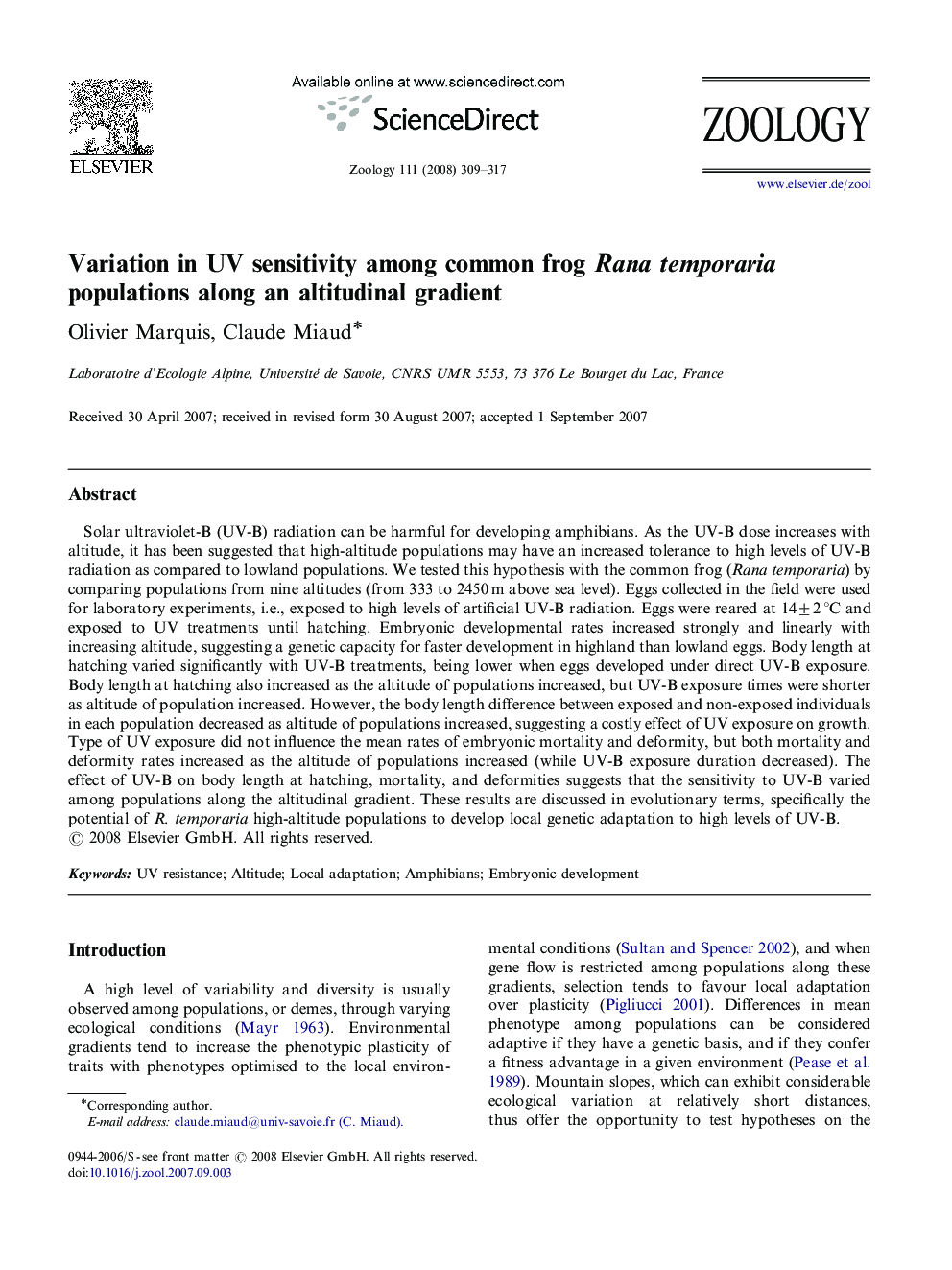| Article ID | Journal | Published Year | Pages | File Type |
|---|---|---|---|---|
| 2791334 | Zoology | 2008 | 9 Pages |
Solar ultraviolet-B (UV-B) radiation can be harmful for developing amphibians. As the UV-B dose increases with altitude, it has been suggested that high-altitude populations may have an increased tolerance to high levels of UV-B radiation as compared to lowland populations. We tested this hypothesis with the common frog (Rana temporaria) by comparing populations from nine altitudes (from 333 to 2450 m above sea level). Eggs collected in the field were used for laboratory experiments, i.e., exposed to high levels of artificial UV-B radiation. Eggs were reared at 14±2 °C and exposed to UV treatments until hatching. Embryonic developmental rates increased strongly and linearly with increasing altitude, suggesting a genetic capacity for faster development in highland than lowland eggs. Body length at hatching varied significantly with UV-B treatments, being lower when eggs developed under direct UV-B exposure. Body length at hatching also increased as the altitude of populations increased, but UV-B exposure times were shorter as altitude of population increased. However, the body length difference between exposed and non-exposed individuals in each population decreased as altitude of populations increased, suggesting a costly effect of UV exposure on growth. Type of UV exposure did not influence the mean rates of embryonic mortality and deformity, but both mortality and deformity rates increased as the altitude of populations increased (while UV-B exposure duration decreased). The effect of UV-B on body length at hatching, mortality, and deformities suggests that the sensitivity to UV-B varied among populations along the altitudinal gradient. These results are discussed in evolutionary terms, specifically the potential of R. temporaria high-altitude populations to develop local genetic adaptation to high levels of UV-B.
